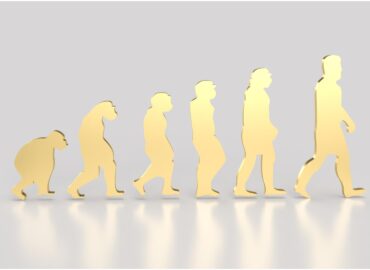Breaking Down Skills, Jobs and Roles: A Human-Centric Approach to Role Deconstruction
It goes without saying that companies, and business executives in particular, must always adapt in today’s fast-paced business environment in order to stay ahead of the curve. A key component of this accomplishment is having a highly qualified and motivated staff. Role deconstruction is essential for managing talent inside your company and preparing it for the future. Let’s investigate this idea further.
What is Role Deconstruction?
A methodical approach to examining and comprehending the different components, obligations, tasks, and responsibilities connected to a particular position inside an organization is called role deconstruction. Through this technique, the role’s total influence and contribution can be better understood by breaking it down into smaller, more controllable components.
What advantages come from using an organized approach to Role Deconstruction?
There are several key benefits to using a role deconstruction strategy:
Improved talent management: Organizations may improve their decisions about hiring, developing, and retaining personnel by knowing the specifics of each function. By doing this, they can be sure that the proper individuals are in the right jobs, which will boost output and performance.
Enhanced strategic planning: A comprehensive comprehension of responsibilities facilitates enhanced congruence with the organization’s overarching strategy and goals. This guarantees that each function has a significant impact in the success of the business.
Effective succession planning: When a smooth transition is required, role deconstruction assists in identifying possible successors for important jobs. This keeps the company moving forward and lessens interruptions.
Boosted employee engagement: Employees feel more empowered and involved in their work when they have a clear understanding of their duties and responsibilities. Increased motivation, contentment, and general wellbeing result from this.
How do progressive organizations deconstruct roles effectively?
When deconstructing a job or a role, you could take into account the following general approach:
Define the purpose of the role: Determine the role’s overall aims and purpose as well as how it fits into the organization’s overall mission and goals.
Conduct stakeholder interviews: Get opinions from people who have experience in the position, such as managers, team members, and previous and present role holders. This offers insightful viewpoints on the demands, difficulties, and major duties related to the position.
Document role requirements: Provide a clear description of the fundamental knowledge, abilities, and experience required for the position. This guarantees a good fit and helps spot any potential talent shortages.
Identify key responsibilities: Enumerate the principal responsibilities and activities linked to the position, ranking them according to their influence.
Determine decision-making authority: Clarify the decision-making authority of the individual by defining the role’s authority and autonomy levels.
Examine interactions and relationships: Examine how the function interacts with other teams, departments, and stakeholders, noting important areas of cooperation and lines of communication.
Establish performance metrics: Provide a clear framework for evaluation by establishing key performance indicators (KPIs) that quantify success in the position.
Consider future evolution: Consider future changes to the role and any skill shortages or new requirements that may arise.
Review organizational alignment: Make sure the position is in line with the organization’s overarching goals and structure.
Document findings and recommendations: Compile all of the data acquired during the deconstruction process and offer suggestions for improving, developing, or reorganizing the job.
Seek feedback and validation: Present results to pertinent parties for approval and comments, adding details as necessary.
Continuously improve: Examine and update the job deconstruction on a regular basis to reflect organizational changes and changes in industry trends.
What benefits can organizations expect as an outcome of adopting a structured Role Deconstruction methodology?
Improved Control Over Talent Management: Helps companies to make well-informed decisions about succession planning, personnel development, and acquisition.
Enhanced Employee Engagement: Provides opportunity for professional development and clear expectations for staff members.
Streamlined Development Processes: Cuts down on the time and money needed for development and hiring initiatives.
Greater Organizational Agility: Enables businesses to adjust to shifting consumer demands and industry changes.
It is our observation that companies using a structured role deconstruction technique are more successful in understanding their workforce structure, matching talent to business goals, and optimizing development procedures.
Let’s explore the relationship between skills and work
As the workplace transitions from a job-based to a skill-based environment, organizations are realizing that every employee possesses a unique combination of skills—more distinctive than the employees may realize. These skills are also rapidly becoming the currency of work.
When you ask the average employee to identify their skills, they usually provide a list of about seven. On the other hand, an average score of 22 is obtained by a system that estimates capabilities based on an individual’s work history. That’s a threefold difference between what an algorithm can infer about it and what our talent will tell us.
Businesses are using technology more and more to exhibit the wealth of talent at their disposal and to link qualified individuals with different types of jobs. A “completely customized, uniquely modular set of reskilling pathways” is created as a result.
In this piece, we’ll go over the key features, benefits, and game-changing potential of PeopleBlox in today’s hectic business environment. Talent intelligence is the cornerstone of effective HR management. It comprises making informed decisions about hiring, training, and keeping employees by utilizing data-driven insights. PeopleBlox takes this concept to the next level by giving companies access to a wide range of tools that help them realize the full potential of their employees.
About Us:
PeopleBlox is a young HR Tech startup based out of Pune, India. We are building products that make a significant dent in the universe! At our office, you’ll find young interns fresh out of Pune’s top engineering colleges working side-by-side with gray-haired, battle-scarred veterans who’ve successfully run businesses. But the one thing that’s common to us all is – the desire to build the best talent management products in the world!
We realize that “Value driven organizations” or “People First” have become clichés in our world. But our desire to build PeopleBlox stems from the worldview of our founders – who fundamentally believe that investing in your team is the only way to build a great company. A lot of what you see in our product & everything that we do – stems from this innate desire of everyone in the company to care for the person around them.
Contact Us:
Follow us on LinkedIn: https://www.linkedin.com/company/peopleblox/
Message: https://peopleblox.io/contact
Call: +91-7447406688



